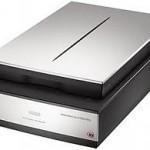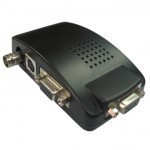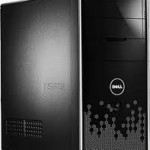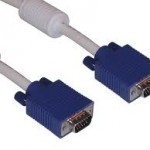Anything can be hacked. The Palm Pilot and it's clones are complex little devices that can be tweaked almost endlessly. Most "hacks" for the Palm Pilot fall into the category of system extensions, i.e. they enable the Palm to do someting it could not do before or they improve the way that that Palm does something currently. For example, a Palm Pilot hack might enable the Palm to use it's screen in landscape mode instead of portrait mode. To explore your Palm Pilot, try an application called Pilot Hack. You Read More
Flatbed Scanner – Pros and Cons

A flatbed scanner is a device that is able to scan a document and then convert what it has read into digital information. Flatbed scanners are different from other types of scanner because flatbed scanners allow the user to simply lay the document down on the machine, close the lid, and scan both sides of the document simultaneously within a matter of seconds. There are many different types of scanners but this article will focus on the pros and cons of flatbed scanners. Pros 1. Quality Flatbed scanners have a Read More
BNC to VGA Converter

BNC BNC, which stands for Bayonet Neill-Concelman, is a type of RF connector used for terminating coaxial cable. BNC connectors are used in a variety of consumer electronics, including radios, video devices and certain Ethernet networks. VGA VGA, which stands for Video Graphics Array, is a piece of display hardware. The VGA hardware is a 15-pin D-subminiature connector that can be used to connected video input devices to a VGA monitor. This piece of technology is most commonly found in desktop and laptop computers. BNC to VGA Converter A BNC Read More
How to Restore a Dell Computer to Factory Settings

When a computer reaches a point where it can no longer be repaired because of viruses and malware, or it has gotten to the point where more time is spent trying to load a page than you spend using it, the time might be to do a factory restore of the computer. What this means is that a copy of what the computer looked like when it was shipped from the factory swipes the rest of the computer clean and replaces it with that copied image. In other words, everything Read More
Dot Pitch
Dot Pitch – also called Phosphor Pitch or Line Pitch – refers to the distance between the sub-pixels (phosphor dots) or liquid crystal display cells of the same color inside a display screen. Expressed in millimeters, technically, dot pitch is the sum of the size of a triad and the distance between the triads (a triad is a cluster of three phosphor dots, colored Red, Green, and Blue inside a CRT screen). A smaller dot pitch means a smaller distance between the phosphor dots and hence better image clarity. Unfortunately, Read More
How to Reset a BIOS Password
On Windows computers, the BIOS (Basic Input/Output System) is updatable computer firmware designed to initialize the computer during start prior to handing control to the operating system. Due to the sensitive nature of the system settings controlled by the BIOS, a password can be set by either the computer manufacturer or the end-user. Some of the most common BIOS producers include AMI, AWARD, IBM, and Phoenix with many manufacturers making their own changes to the firmware prior to selling a computer on the open market. The common methods to reset Read More
Tele-Immersion
Tele-Immersion or the use of holographic environments is the next step to Internet video conferencing. This technology aims to produce a computer-generated central environment in which participants from anywhere in the world can interact as if they are in the same room. This technology goes far beyond the current technological combination of telephony and Internet by videoconferencing to exchange data. Tele-Immersion will be able to address the line-of-sight limitations of the current video conferencing technology. With the use of holographic environments, users will be able to have an unrestricted view Read More
Fibre Channel
Fibre Channel is a set of standards for connecting storage devices in a fabric network. The Fibre Channel standard identifies a protocol and a collection of physical interfaces for managing computer peripheral components. This standard’s key purpose is managing large numbers of storage devices. Fibre Channel uses serial interfaces working at symbol rates from 133MB/s up to 4.25Gb/s. Optical as well as electrical signals are supported. Fibre Channel supports data transmission rates of 100MBps. It also allows 126 devices to be connected on a single network. The channels are full duplex, Read More
NVRAM (Non-Volatile Random Access Memory)
NVRAM is an acronym for Non-Volatile Random Access Memory. NVRAM is a type of Random Access Memory (RAM) that retains its information when power is turned off. The NVRAM is a small 24 pin DIP (Dual Inline Package) integrated circuit chip and is thus able to obtain the power needed to keep it running from the CMOS battery installed in your motherboard. It keeps track of various system parameters such as serial number, Ethernet MAC (Media Access Control) address, HOSTID, date of manufacture, etc. NVRAM is therefore a type of Read More
VGA Cable

VGA (Video Graphics Array) cables connect computers with monitors or television sets. The cables are based on the graphics standard that IBM developed on personal computers sold during the 1980s. Since that time, almost all personal computers that are built to support the Windows operating system (OS) incorporate support for VGA connections and the more advanced HD connections that have been created and implemented since VGA was first invented. How do VGA Connections Work? The term VGA refers to the type of cable used to connect a display to a Read More


Share on: